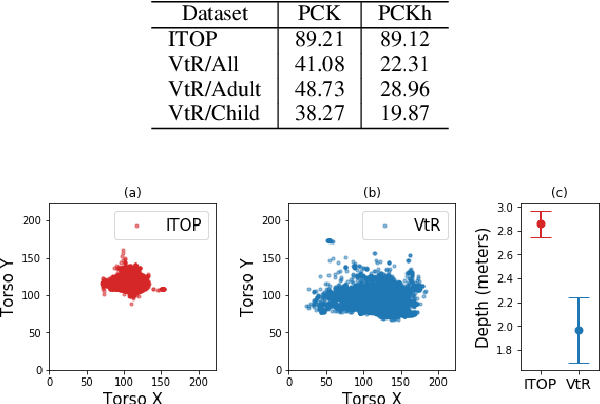Alejandro Mendoza Garcia
Occlusion Robust 3D Human Pose Estimation with StridedPoseGraphFormer and Data Augmentation
Apr 24, 2023Abstract:Occlusion is an omnipresent challenge in 3D human pose estimation (HPE). In spite of the large amount of research dedicated to 3D HPE, only a limited number of studies address the problem of occlusion explicitly. To fill this gap, we propose to combine exploitation of spatio-temporal features with synthetic occlusion augmentation during training to deal with occlusion. To this end, we build a spatio-temporal 3D HPE model, StridedPoseGraphFormer based on graph convolution and transformers, and train it using occlusion augmentation. Unlike the existing occlusion-aware methods, that are only tested for limited occlusion, we extensively evaluate our method for varying degrees of occlusion. We show that our proposed method compares favorably with the state-of-the-art (SoA). Our experimental results also reveal that in the absence of any occlusion handling mechanism, the performance of SoA 3D HPE methods degrades significantly when they encounter occlusion.
Vogtareuth Rehab Depth Datasets: Benchmark for Marker-less Posture Estimation in Rehabilitation
Aug 23, 2021



Abstract:Posture estimation using a single depth camera has become a useful tool for analyzing movements in rehabilitation. Recent advances in posture estimation in computer vision research have been possible due to the availability of large-scale pose datasets. However, the complex postures involved in rehabilitation exercises are not represented in the existing benchmark depth datasets. To address this limitation, we propose two rehabilitation-specific pose datasets containing depth images and 2D pose information of patients, both adult and children, performing rehab exercises. We use a state-of-the-art marker-less posture estimation model which is trained on a non-rehab benchmark dataset. We evaluate it on our rehab datasets, and observe that the performance degrades significantly from non-rehab to rehab, highlighting the need for these datasets. We show that our dataset can be used to train pose models to detect rehab-specific complex postures. The datasets will be released for the benefit of the research community.
 Add to Chrome
Add to Chrome Add to Firefox
Add to Firefox Add to Edge
Add to Edge